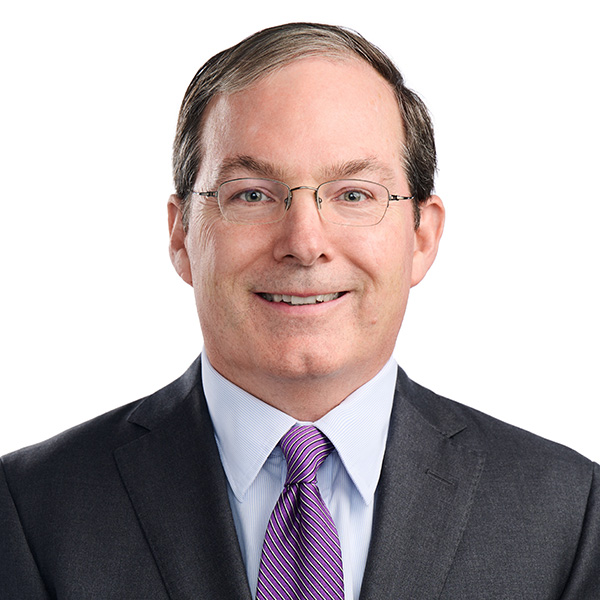During my 14 years at KKR, our annual Outlook note has inevitably ignited dynamic conversations. That’s what makes markets. However, this year we have seen a step function in interest, given the current number of complex issues at play. As a result, we have spent more time than ever with KKR deal teams and clients digging deeper into a variety of topics that are shaping both the global economy and the capital markets, including tariffs and U.S.-China tensions. However, four distinctive subjects stood out this year. For starters, there was great interest in our U.S. productivity boom thesis. Similar to the 1960s and 1990s, we see current U.S. productivity as a crucial differentiator in this cycle for capital formation and returns. Second, there was much discussion about interest rates. While we anticipate higher rates, our perspective differs from the prevailing consensus. Specifically, we think that some cooling cyclical inflation and the steepness of the yield curve will prevent the long end from becoming unglued, particularly as uncertainty around Fed policy diminishes and sustainable buyers of higher yields emerge. Real rates likely matter more than the consensus now thinks. Third, we are maximum bullish on the macro importance of our capital heavy to capital light thesis for investors with flexible capital. To this end, we discuss in detail what this theme means for private capital, especially players with operational expertise and the ability to look across a company’s capital structure. Finally, we dedicate significant attention to recent developments in the Asset-Based Finance arena, an asset class we view as a highly efficient way to play our Regime Change thesis. So, amid the questions and debate, our core message for 2025 remains that the opportunity for above-average returns continues to be compelling, considering the strength of U.S. productivity, favorable financial conditions, and robust nominal earnings growth. In our view, the investment cycle is far from over, with numerous mega themes demanding trillions in private capital over the next decade.
The flywheel, when properly conceived and executed, creates both continuity and change.
I have been investing behind macro trends since the end of 2003, and I can’t think of a time outside of the 2008 Global Financial Crisis when investor appetite for what is going on in the macro landscape has been this high. To be sure, our annual Outlook typically stimulates demand to compare notes and exchange ideas. However, this time seems different. The discourse is more elevated, and there is heightened debate around both the opportunities as well as the potential risks across geographies and capital structures.
We certainly welcome the debate because we are doing the same internally at KKR. It is embedded in our culture and is reflected in our investment processes. Add in some smart clients with strong points of view, and we think the benefits of this ‘flywheel’ effect have traditionally helped us all get to the right answers faster.
To this end, we decided to spend some time in this note opining on the areas eliciting the most investor interest since we published our 2025 Outlook: Glass Still Half Full in late December.
1. Where are you seeing productivity gains in the U.S.?
As we laid out in our Outlook, the impact of U.S. productivity growth on GDP is a major differentiator and is at the core of our thesis this cycle. Where is it occurring, and how do we invest behind it? See below for details, but our research shows that productivity is being driven by technology enhancements in industries including information services, retail, professional services, and mining (including oil & gas.) Not surprisingly, technological advancements are also behind some of the most impressive productivity trends at the metropolitan level in tech hubs such as San Francisco/San Jose and Seattle. Another productivity trend we observe is that sectors that grappled with acute Pandemic-era labor disruptions (e.g., leisure and hospitality) have also experienced impressive productivity gains. That may help explain why locales that boomed in the work from home era, including Nashville and Miami, have also shown outsized productivity gains. Beyond the benefits that these centers of excellence are providing from an output perspective, major investment opportunities are also bubbling up alongside this growth in Real Estate, Infrastructure, and Services. Finally, we think the news around the new DeepSeek technology offers many positives, including being productivity enhancing. However, we are watching closely the total amount of capital going into the overall AI space with some increasing caution. See below for full details.
2. What is happening around interest rates?
In addition to concerns about the sustainability of productivity, numerous questions are circulating regarding the rates outlook. Much like in other areas where traditional macro relationships have faltered, the interest rates landscape is no exception. Historically, Fed cutting cycles have been accompanied by a rally in bond yields (as seen in 2007 and 2019). However, this time, the narrative is different. Indeed, most reminiscent of the patterns observed during the Fed cuts in the 1980s, the 10-year Treasury yield has actually increased by 85 basis points since the Fed began cutting short-term rates in late 2024. So, what’s driving this atypical behavior in the yield curve? We contend that the long end of the curve is under pressure because bond investors are increasingly concerned that the Fed may not fully commit to sustained rate cuts in the medium term. In simpler terms, long-term bond yields are reflecting a risk that both inflation and rates could rise once again. That said, as we detail below, real rates implied by the market seem too restrictive. As such, we do not see the long end of the curve getting unglued the way some bond bears do, but we fully agree that the role of government bonds will be diminished this cycle, one of the key underpinnings of our Regime Change thesis for asset allocation.
3. How do we gain more exposure to your capital heavy to capital light thesis?
Without question, this theme is a high conviction idea where investors are eager for more exposure. As a firm, we have been very active in helping companies across insurance, credit card receivables, healthcare, and industrials sell off capital heavy parts of their businesses via divestitures, securitizations, and asset sales. In many instances, we see more and more companies deemphasizing their cyclical or lower-returning components to create more sustainable companies with greater visibility of earnings and returns. More details below.
4. Can you give us more detail on the emerging relative value in Asset-Based Finance and how this asset class performs as part of a diversified portfolio?
To review, at the heart of our Regime Change thesis is that the cash flows from Real Assets, including Infrastructure, parts of Real Estate, and Asset-Based Finance, have become more appealing in an environment of higher nominal GDP growth. Not surprisingly (given ongoing high inflation prints), we have received multiple requests in recent weeks to assess how ABF might fit into a portfolio, especially in a world with lower overall expected returns. As we detail below, the correlation benefits one picks up from an allocation to this asset class is portfolio enhancing in many instances – and one is gaining a higher illiquidity premium than in many other areas of Private Credit. All told, the market opportunity is significant, as lending in this asset class is now approaching $6 trillion or more, which is multiples the size of High Yield, Levered Loans, and/or Direct Lending.
Looking at the big picture, our base view remains that this cycle is different. Specifically, we link our Regime Change thesis to four structural shifts: bigger government deficits, heightened geopolitics, a messy energy transition, and stickier inflation. Consistent with this view, we also see an asynchronous global economic recovery, defined by rolling recoveries and rolling recessions. Asia may be a textbook example: Japanese 30-year bonds now yield more than similar duration bonds in China. Meanwhile, in Europe we see that bond yields in Greece, which defaulted to the IMF in 2015 (Exhibit 1), are now essentially on par with those of France.
EXHIBIT 1: 30-Year Government Bonds in France and Greece Now Have Comparable Yields, While the Same Bonds in Japan Have a Higher Yield Than in China
Government Bond Yields, 30-Year

EXHIBIT 2: Services Sectors Are Seeing Stronger Job Gains and Higher Inflation Pressure Than Goods- Producing Sectors
Services vs. Goods, Y/y % Change

Or consider that the U.S. ISM has been below 50 for twenty-five out of twenty-seven months; at the same time, existing home sales are now at the lowest level since the Global Financial Crisis. Yet, on the services side of the economy, underlying trends remain robust, with services jobs surging to a positive 231,000 in December 2024, compared to negative 8,000 for goods – a jobs creation delta of fully 239,000.
Against this backdrop, we believe a top-down framework that harnesses some of the mega themes we at KKR are championing will lead to better outcomes. Our favorites heading into 2025 include the Security of Everything, Productivity Enhancers, Collateral-Based Cash Flows, and Capital Heavy to Capital Light Investment Stories.
Acknowledgements
David McNellis, Aidan Corcoran, Brian Leung, Rebecca Ramsey, Ezra Max, Miguel Montoya, Rachel Li, Thibaud Monmirel






